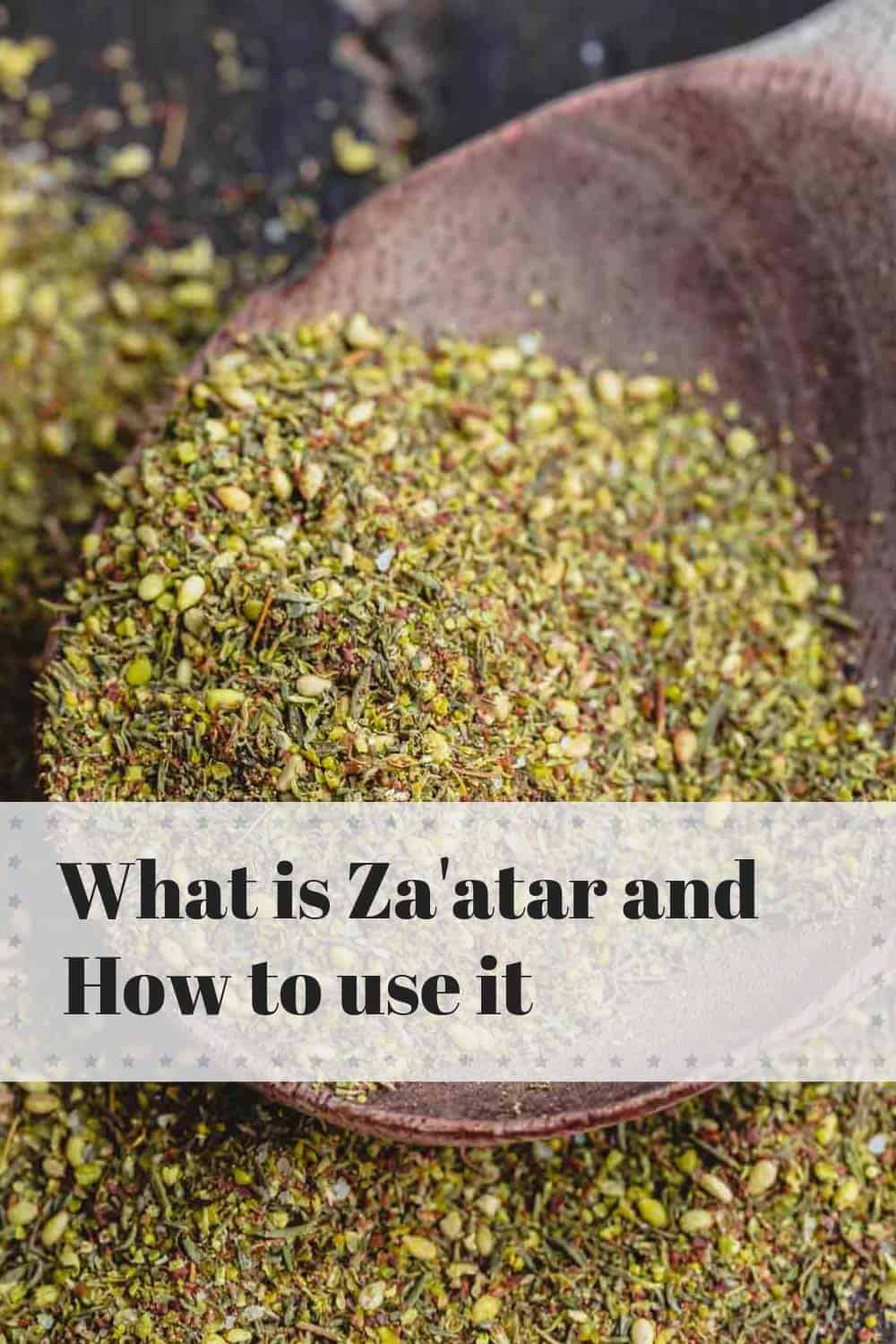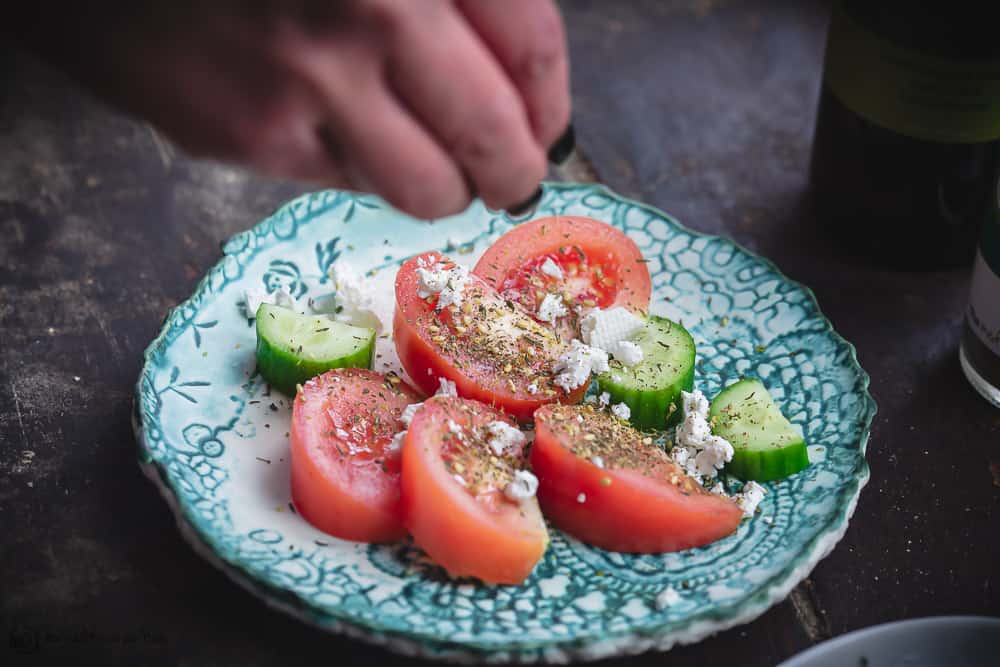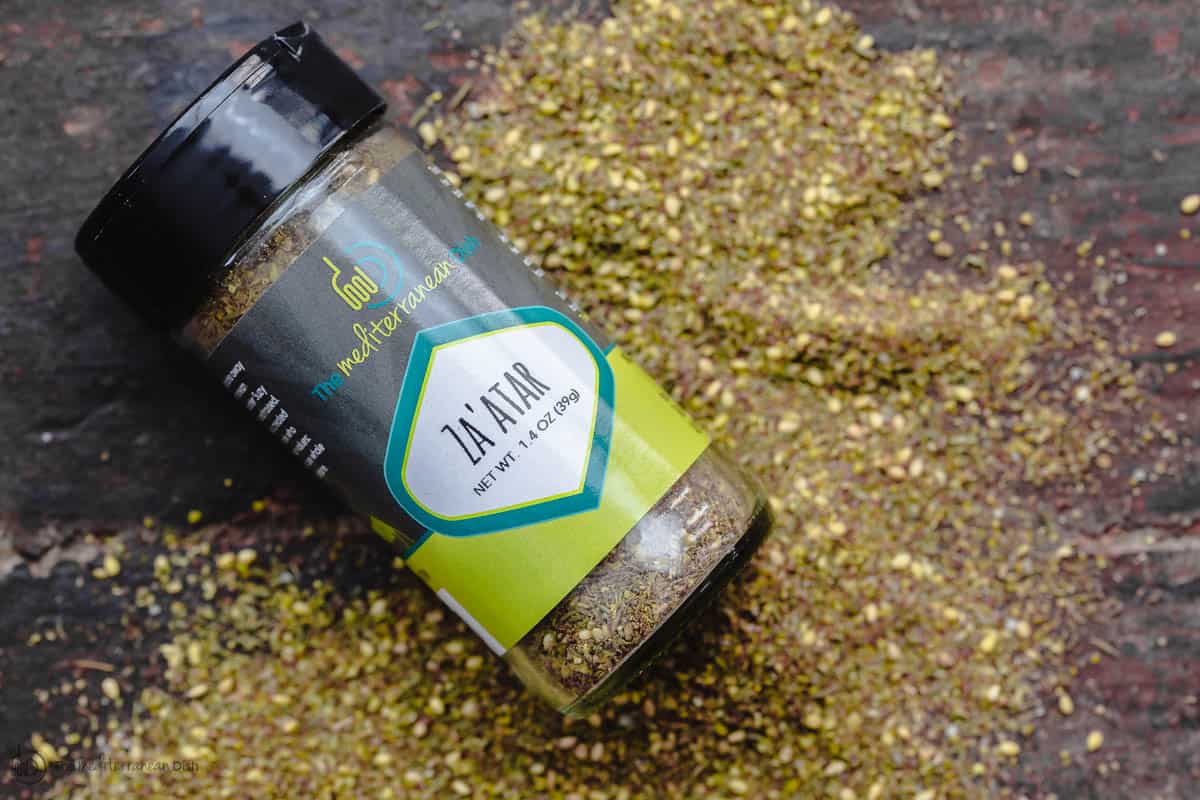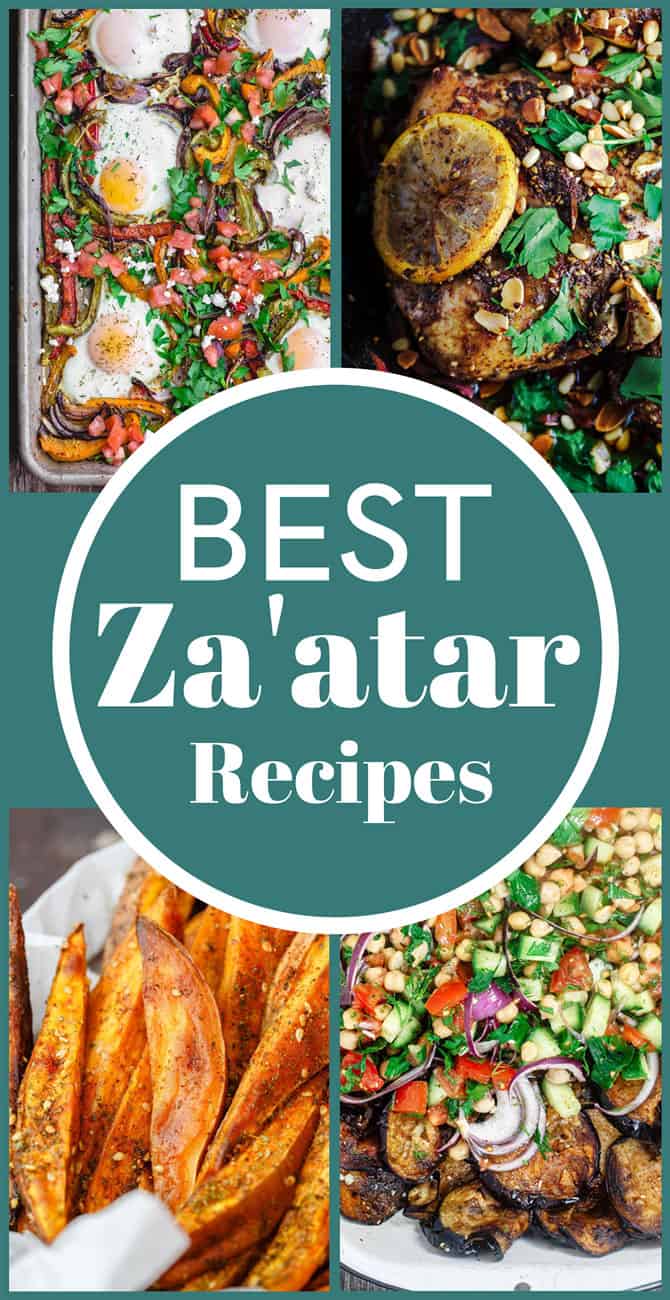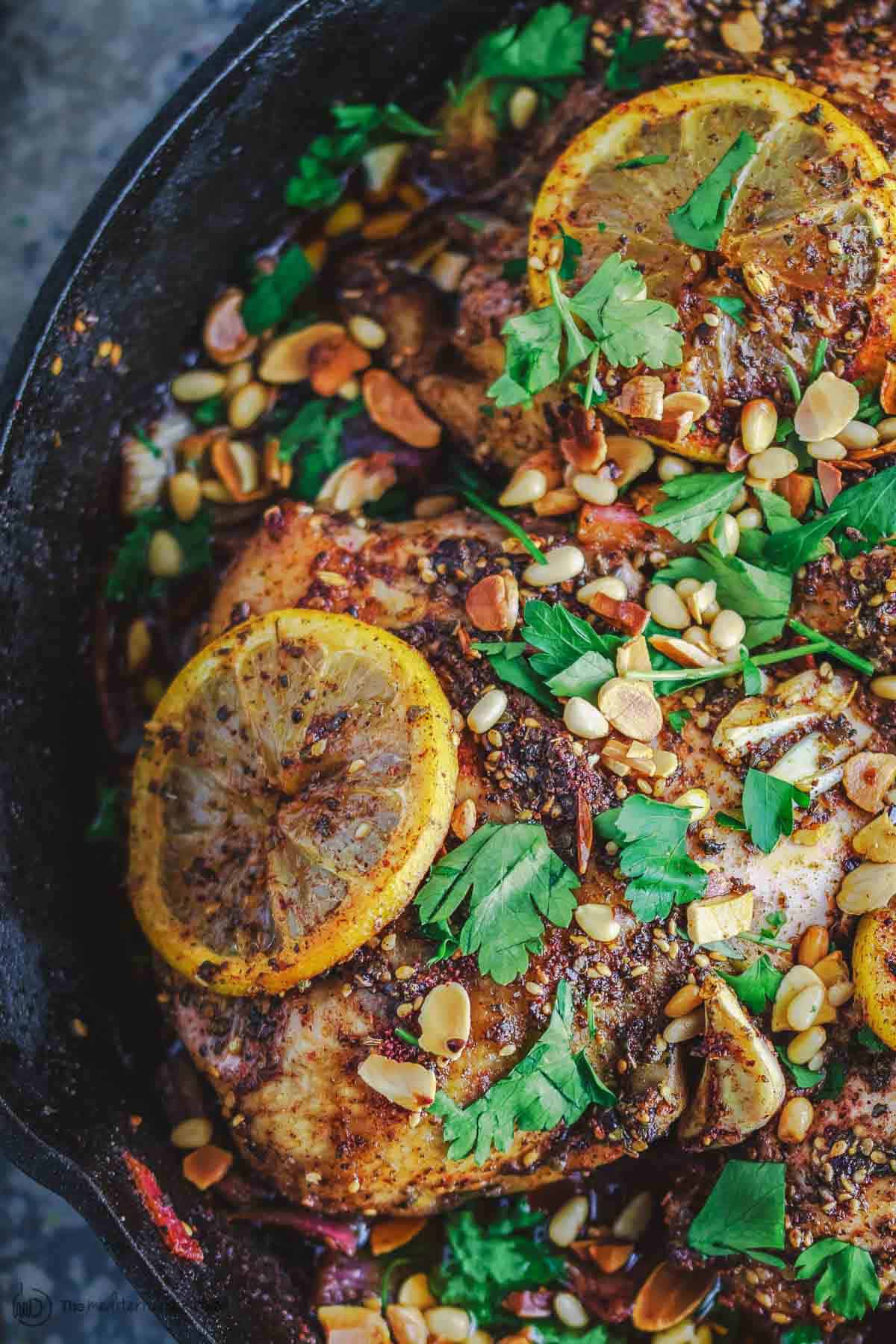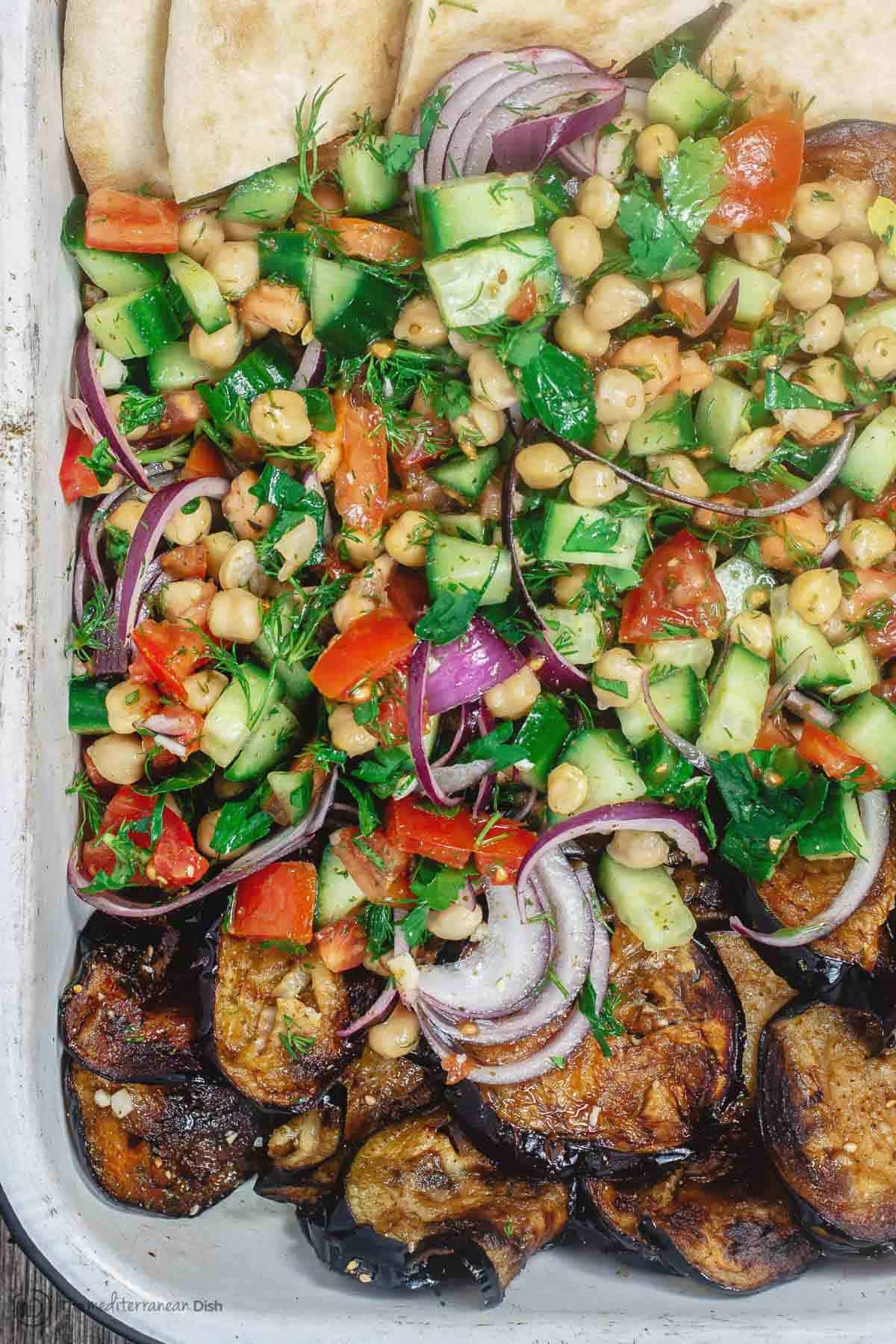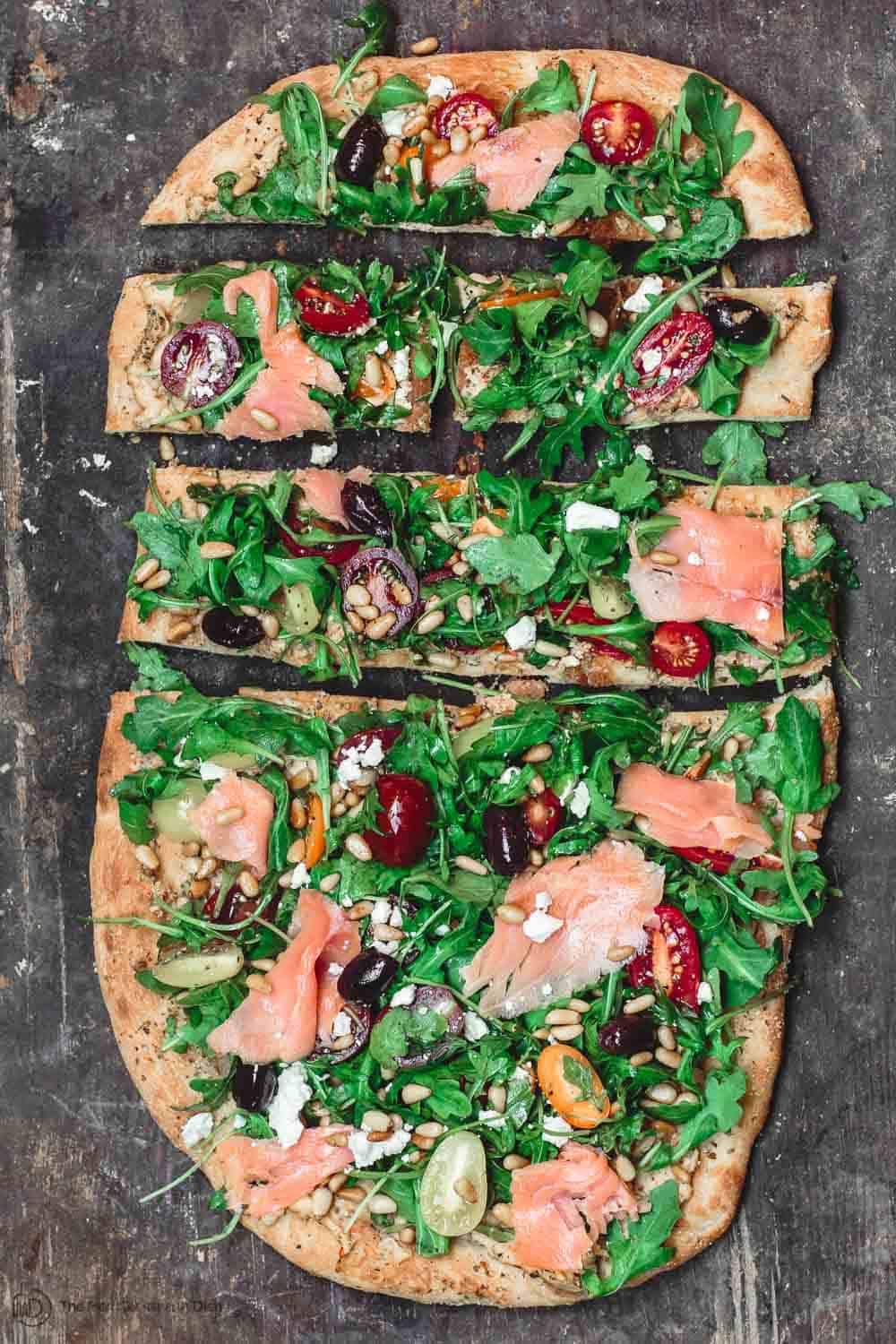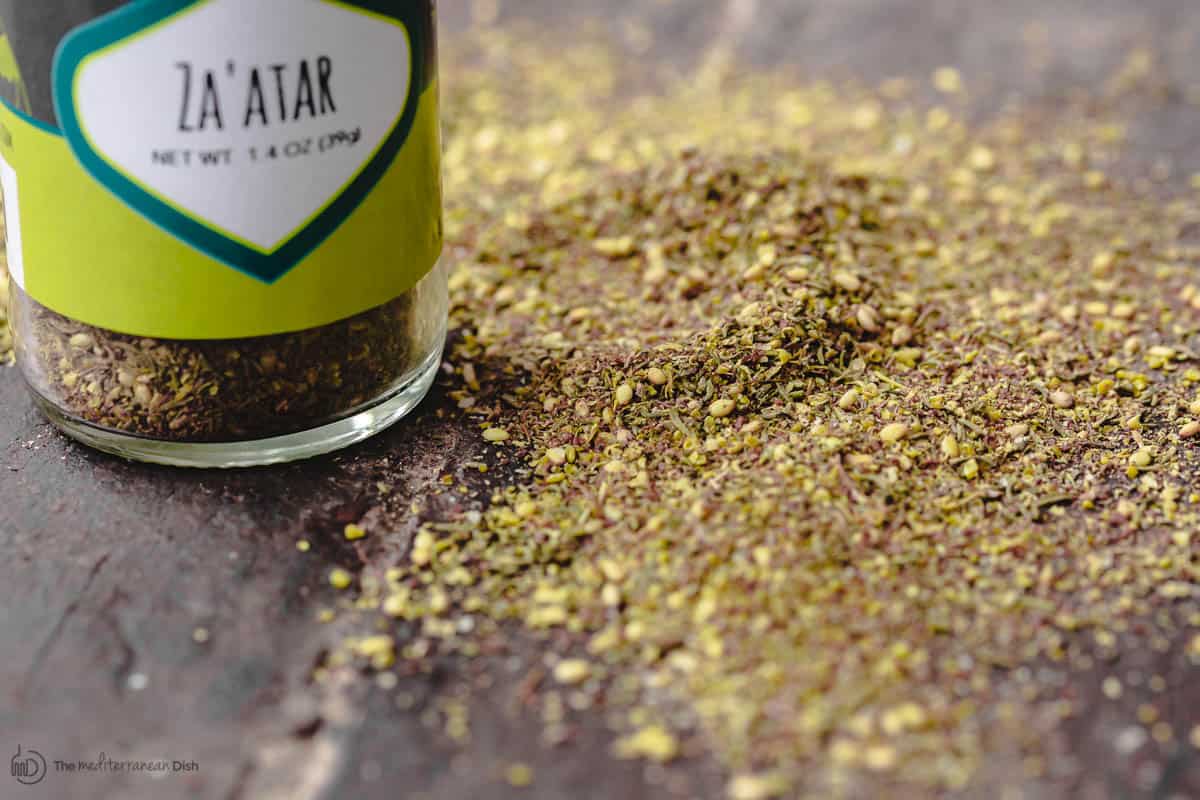Be sure to grab my list of 11 BEST za’atar recipes below. From amazing salads to the best roast chicken, breakfast, and more!
What is za’atar (zaatar)?
I love highlighting my favorite Mediterranean pantry ingredients, like I do in my Aleppo pepper guide. Today, I’m sharing everything you need to know about one of the most-used seasonings in my spice cabinet, za’atar.
Za’atar (pronounced Zaah-tar) is most identified with Middle Eastern and Mediterranean cooking. A combination of herbs, sesame seeds, sumac, and salt, it is one of the world’s unique and best seasonings. It’s loaded with bold flavors, has great texture, and even boasts some health benefits–from soothing inflammation to boosting cognition!
Many don’t know this, but the Arabic word Za’atar (zaatar) also describes an actual herb that’s in the wild thyme family which starts its life looking more like oregano (Blends that stick to the traditional taste will include Mediterranean wild thyme in them.)
What’s in it? Not all za’atar is created equal
So, we said Zaatar is a combination of herbs, sesame seeds, and sumac (a tangy red spice from sumac berries – get more info about it in our sumac guide!). How much sumac? White or toasted sesame seeds? What else is added? There are no official standards out there, and that’s why you’ll find different variations of zaatar seasoning on the market. As someone who’s of Mediterranean origins and who has tried many blends over the years (more than I care to remember), I can tell you, not all za’atar is created equal. Taste, texture, and quality will vary a lot. Sadly, many blends will not include quality herbs. To increase volume and lower prices, cheaper za’atar blends include a large amount of fillers in the form of wheat, flavored ground straw or husk. And many will substitute citric acid for sumac.
Quality all-natural za’atar seasoning and where to find it
You can find za’atar in the spice section at health food stores or Mediterranean and Middle Eastern grocery stores. My best advice to you is to look at the the label carefully and ask questions. Look for za’atar that contains quality wild thyme (or hyssop) and sumac (not citric acid.) Make sure the ingredients are all natural and nothing else is added. Look at it carefully, it should have good texture and look more on the green side (like the picture above).
Let me tell you about the blend I use
The Mediterranean Dish za’atar is sourced from trusted suppliers, includes only quality all-natural ingredients, and stays true to traditional taste and texture. An aromatic blend with both earthy and subtle citrus undertones, and just a hint of nuttiness, it includes: Remember, many lower quality zaatar blends substitute citric acid for sumac and add other fillers like wheat and flavored straw to increase volume. Where to Buy? If you live in the USA, you can find our all-natural za’atar at our online store.
How to use za’atar (zaatar): 13 BEST Za’atar Recipes
I use zaatar on a regular basis. It’s great to simply season some avocados or tomatoes for a snack (drizzle a little extra virgin olive oil), to generously season pillowy homemade bread rolls, to jazz up some breakfast eggs and spinach pasta, or to include with olive oil for dipping as part of a big Mediterranean spread. But I also use it to season salads, meats and even fish. Here are 13 favorite recipes using za’atar:
Grilled Eggplant Salad with Za’atar Pita Crisps Savory Galette with Summer Veggies and Za’atar Za’atar Roasted Chicken Chickpea Salad with Eggplants Olive Oil Baked Sweet Potato Fries
Mediterranean Sheet Pan Baked Eggs & Veggies Za’atar Garlic Salmon and Veggies Manaqish (Za’atar Flatbread)
Mediterranean Avocado Salad Mediterranean Sweet Potato Toast Mediterranean Breakfast Toast with Hummus Mediterranean Flat Bread with Arugula and Smoked Salmon Pita Breakfast Pizza with Za’atar
Head over to The Mediterranean Dish Store to grab some today! Try our Ultimate Mediterranean Spice Bundle Or the Exotic 4 Bundle! You may also like: How to make dukkah (Egyptian Dukkah Recipe) How to make falafel How to make labneh

